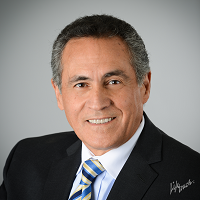In September, as part of our 50th Anniversary year, we hosted guest speaker Dr. Dan Domenech, author of ‘Personalizing 21st Century Education: A FRAMEWORK FOR STUDENT SUCCESS’, and grandfather to two students in our school. Dr. Domenech’s message, that the schools of the present and future should embody a model of personalized learning modeled in Montessori schools, is clearly aligned with our own.
–
Dr. Domenech and his colleges recently wrote a letter to the editor of ‘Education Week’ in response to an article they ran on Personalized Learning. In the letter, he so precisely describes what personalized learning is and the importance of also creating collaborative, supportive communities among those learners.
–
To the Editor:
The recent special report (“Personalized Learning: 4 Big Questions Shaping the Movement,” November 7, 2018) raises four key issues that deserve clarification. As leaders of the AASA Personalized Learning national cohort, we offer the following reflections.
–
First, personalization is a teaching and learning process that addresses the strengths and needs of individual learners. Carefully monitoring student progress against clearly defined standards, personalization ensures that every learner’s academic, emotional, and physical needs are understood and accommodated. Personalized schools and districts emphasize a balanced approach to progress monitoring, using a range of authentic assessments rather than single data points like standardized tests.
–
Second, like every major education movement, personalization can be fraught with stereotypes. The idea that it is “impersonal” reflects a misunderstanding of its central purpose. Personalized classrooms allow for high levels of interaction, discourse, and real-world application. Teachers use cooperative learning, technology, and project-based learning to encourage peer feedback and authentic investigation and research.
–
Also, personalization is not a model of teaching where students determine everything. Teachers must scaffold the learning process—from initial modeling and coaching-oriented feedback to a gradual release of responsibility to students. Voice and choice are building blocks of effective personalized learning. Without sustained student input and feedback, their talents, creativity, and efficacy can be overlooked or negated.
–
Finally, we agree that a “canned” instructional design is at odds with addressing the unique strengths and challenges of every learner. Professional development for personalization requires action research and coaching that is site-based and collegial—not pre-structured in a kit or program. Many companies are becoming more sensitive to integrating cultural responsiveness, differentiation, and performance assessments and projects. However, the process of personalizing schools is deeply iterative, collegial, and challenging—with no single program or approach adequate to ensure a personalized classroom.
–
–
 Dr. Daniel A. Domenech, Ph.D, serves as the Executive Director of the American Association of School Administrators. Dr. Domenech has more than 40 years of experience in public education. He served as senior vice president for national urban markets with McGraw-Hill Education and was responsible for building strong relationships with large school districts nationwide. He served as Superintendent of Fairfax County Public Schools, among other career positions.
Dr. Daniel A. Domenech, Ph.D, serves as the Executive Director of the American Association of School Administrators. Dr. Domenech has more than 40 years of experience in public education. He served as senior vice president for national urban markets with McGraw-Hill Education and was responsible for building strong relationships with large school districts nationwide. He served as Superintendent of Fairfax County Public Schools, among other career positions.